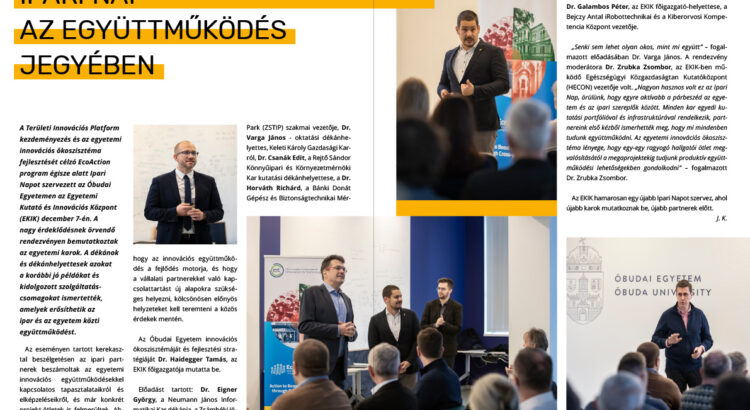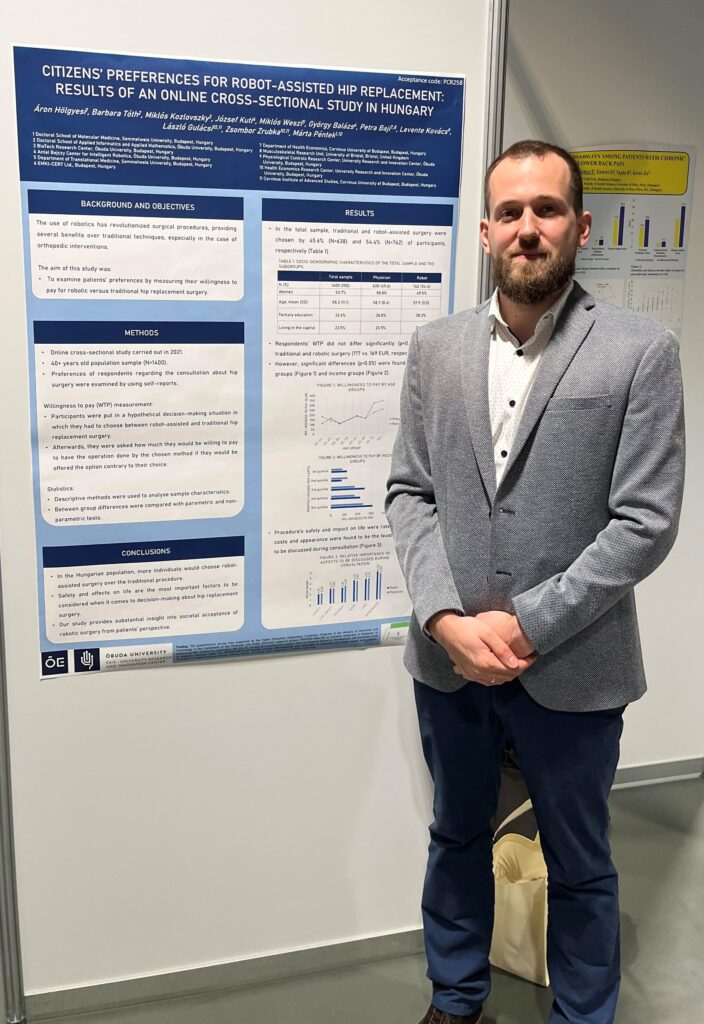A prestigious international professional organization, ISPOR (International Society for Pharmacoeconomics and Outcomes Research) recently published an interesting study that examines the accuracy of the definitions used in digital healthcare. We interviewed one of the authors of the study, Dr. Zsombor Zrubka, who leads the Health Economics Research Center (HECON) at the University Research and Innovation Center.
How did the idea arise to examine the definitions of digital healthcare?
Dr. Zsombor Zrubka: It is the task of health economists to evaluate the clinical effectiveness of certain technologies and to inform decision-makers about the value of a technology based on this. That is, whether the health gain due to the technology and the costs are acceptable. In recent years, we have read more and more prestigious studies that summarized, for example, the effect of telemedicine on gastroenterology, or the effectiveness of mobile healthcare in cancer. Many studies came to mixed conclusions because the selected technologies or patient populations were overly heterogeneous. Thinking about the possible causes and consequences of this phenomenon, we came to the conclusion that we need to examine the definitions of the terms used in digital healthcare. How accurate are these definitions? How useful are they in health economic analyses?
Could you give an example?
Dr. Zsombor Zrubka: Yes. When determining the value of a technology, it is very important to define precisely the patient population, what exactly the intervention is, what we are comparing it to, and what criteria we are using to examine the health effect. For example, in the case of teledermatology diagnosis, it matters whether the doctor looks at a picture with the naked eye or whether artificial intelligence analyzes it. It also matters whether we are trying to recognize melanoma or dry skin, and whether we are examining this in individuals with white or black skin. For each digital technology, the patient group and goal for which the technology was developed must be precisely defined. Confusing the concepts can lead to undervaluing the effects of some technologies and overvaluing others. This can lead to effective technologies being introduced too late and scarce resources being wasted on technologies that are not effective enough.
What were the most important results of the research?
Dr. Zrubka Zsombor: With our international research group operating in the virtual space, we examined 545 review studies and collected the definitions of the four main concepts used in digital healthcare: digital healthcare, eHealth, mHealth (mobile healthcare), and telehealth/telemedicine. We found 142 different definitions for these four concepts, for example, the authors defined telemedicine in 52 different ways. The number of definitions in use has increased over the past five years. When we analyzed the content of these definitions in detail using text analysis methods, we concluded that the overlaps are significant and the concepts are too general, essentially unsuitable for describing the technologies in question with the precision expected by healthcare economists. We suggested that authors define much more precisely for which patients, for what purpose, under what circumstances, and to achieve what outcomes they use digital technologies.
What effect do you expect from this study?
Dr. Zrubka Zsombor: Obviously, one swallow doesn’t make a summer, but there are increasing numbers of studies that draw attention to methodological errors and quality deficiencies in publications related to digital healthcare or medical artificial intelligence research. For example, HECON also conducts research in this area within the framework of the TKP project. In recent decades, significant efforts have been made in the field of medical or pharmaceutical research to ensure that the results are presented in a unified, understandable, and as transparent manner as possible. There is still a lot to be done in this area as well, and hopefully a development process will also start in the field of digital healthcare, which will serve the better utilization of results and thus more effective care.
Will this research have a continuation?
Dr. Zrubka Zsombor: Yes, the second phase of the research is currently underway, in which we would like to reach a consensus with a wider panel of experts using the Delphi method on what should be the minimum criteria that need to be addressed when defining concepts related to digital healthcare so that they can be well-used in healthcare economic analyses.
We wish you further success!
Dr. Zrubka Zsombor: Thank you.
The HECON study was published in the prestigious English-language journal, Value in Health, and can be read in full at the link below:
https://www.sciencedirect.com/science/article/pii/S1098301522019325












